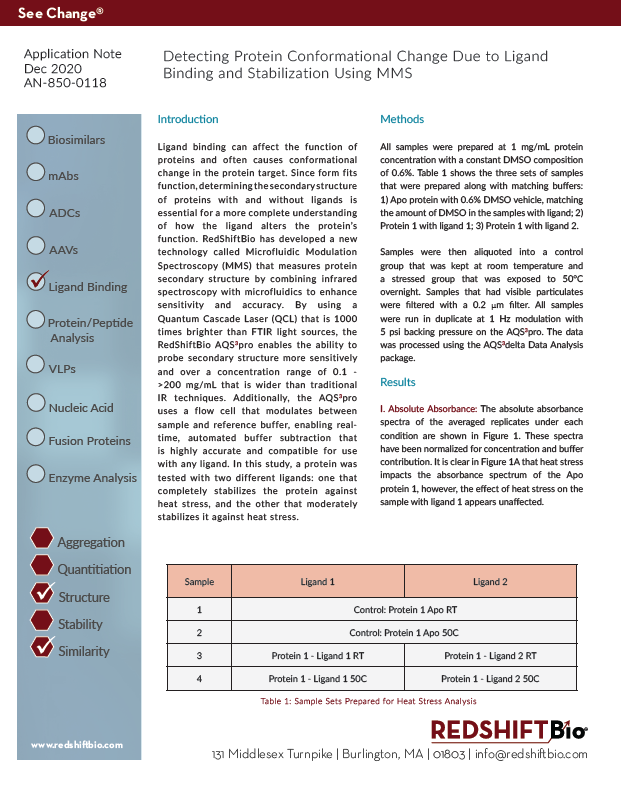
App Notes
December 1, 2020
Detecting Protein Conformational Change Due to Ligand Binding and Stabilization Using MMS
This Application Note Highlights:
- Protein was tested with two different ligands: one that completely stabilizes the protein against heat stress, and the other that moderately stabilizes it against heat stress.
- Determining of the secondary structure of proteins with and without ligands, offering a more complete understanding of how the ligand alters the protein’s function
- Modulating between sample and reference buffer with the flow cell utilized by the AQS³pro
- Enabling real-time, highly accurate and compatible buffer subtraction with MMS, for use with any ligand.
Detecting Protein Conformational Change
Ligand binding can affect the function of proteins and often causes protein conformational change. Since form fits function, determining the secondary structure of proteins with and without ligands is essential for a more complete understanding of how the ligand alters the protein’s function. RedShiftBio has developed a new technology called Microfluidic Modulation Spectroscopy (MMS) that measures protein secondary structure by combining infrared spectroscopy with microfluidics to enhance sensitivity and accuracy.


Please complete the form if you would like to download the app note.
Thank you for submitting the form. A member of our team will reach out shortly.
Oops! Something went wrong while submitting the form.

